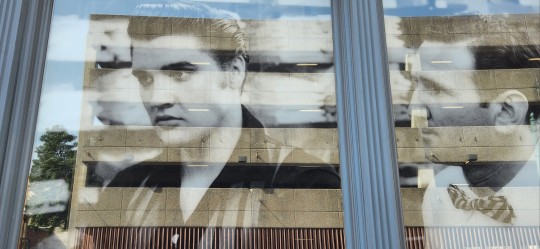#Beale street
Text

B.B. King was born on a cotton plantation in Mississippi and later worked at a cotton gin in Indianola. While young, B.B. sang in the gospel choir at Elkhorn Baptist Church in Kilmichael. He was attracted to the Pentecostal Church of God in Christ because of its music. The local minister performed with a Sears Roebuck Silvertone guitar during services and taught King his first three chords. His first guitar was bought for him by Flake Cartledge, his employer in Kilmichael for 15 dollars. Cartledge withheld money from King's salary for the next two months until the debt was repaid. He was so attracted to music he taught himself to play guitar and began his career in juke joints and local radio. He later lived in Memphis and Chicago; then, as his fame grew, he toured the world extensively.
Born Riley B. King on September 16, 1925 near Itta Bena, Mississippi and died on May 14, 2015 in Las Vegas, Nevada at the age of 89.
#bb king#love#music legend#blues#guitarist#singer#songwriter#rock and roll#beale street#memphis#tennessee#lucille#juke joints#black lives#nobody loves me but my mother
39 notes
·
View notes
Text



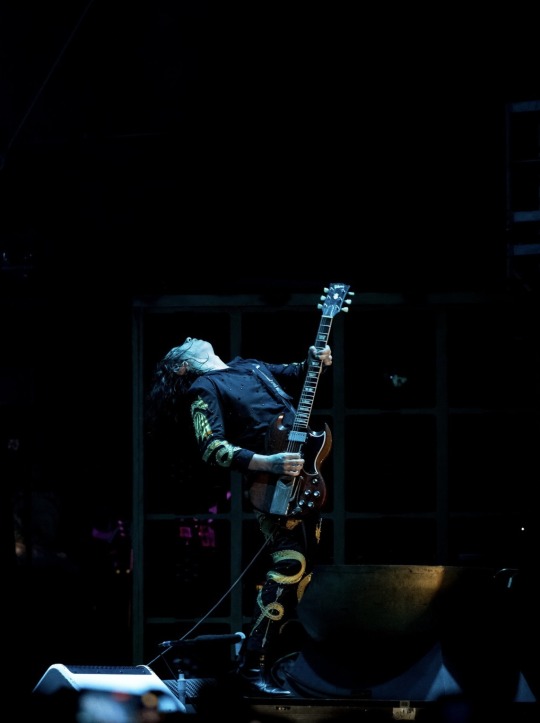




something about THIS MAN
photos by : Blake Crandall : off the record press
#jake gvf#danny gvf#josh gvf#sam gvf#greta van fleet#greta van meme#gvf#jake kiszka#danny wagner#josh kiszka#sam kiszka#jake kiszkas guitar#beale street#greta#jake greta van fleet#josh greta van fleet#sam greta van fleet#danny greta van fleet#feral
255 notes
·
View notes
Text










these pics from the Beale Street music festival really hit geez
pics from ig anna_hope_blackwell
#gvf#greta van fleet#Greta#sam kiszka#danny wagner#jake kiszka#josh kiszka#daniel wagner#sammy kiszka#beale street
170 notes
·
View notes
Text

Beale Street History. Memphis Tn. - 1939
21 notes
·
View notes
Text

Roots under Beale: The Significance of Beale Street to Memphis Hoodoo History
In the late 1800s, Robert Church, the first African-American millionaire in the South took great interest in Beale Street. After purchasing land on Beale, Church built Church Park and Auditorium exclusively for black Memphians. He also created a recreational center and an upscale hotel. Beale Street was very important to African American life in Memphis as Church wanted to create a safe haven for black Memphians where African American food, music and entertainment could be celebrated.
A community of healers, conjurers and rootworkers began to develop on Beale. Memphians knew that you could visit the right store or juke joint and find someone with the ‘gift’ to provide magical and spiritual help. Beale Street musicians like W.C. Handy began to speak of the hoodoo culture through the lyrics of their songs. Blues singer Lillie Mae Glover known as ‘Ma Rainey II’ became popular on Beale Street as not only a performer but also a conjurer. She would perform rituals and various spiritual workings for other performers on Beale, as well as random customers who knew to seek her out. One of her special abilities was the ability to make mojo hands for blues musicians. While many hands were traditionally made using roots, lodestone and a red flannel bag, Lillie Mae made hers using common ingredients like sugar, flour and a heap of coal.
It became evident that hoodoo was being practiced in downtown Memphis much to the dislike of the white community. Hoodoo and any African based religious practices were compared to savage paganism that threatened the wives and children of the white community of Memphis. Local police were put on alert regarding the threat of hoodoo and ‘voodooism’ as it was commonly referred to.
The Memphis Press-Scimitar reported:
‘The Voodoo business still thrives on Beale Street. Police, looking for a witch
doctor yesterday confiscated a half a sack full of “Stay Away Powder,”
“Easy Life Powder” and “Spanish Luck Drops” being sold to negroes at
25 cents a set. The “Stay Away” powder, supposed to jinx a love rival,
proved to be nothing stronger than flour. “Easy Life” powder appeared to
be a fine grade of ground clay. “Spanish Luck Drops” were more potent.
They were a cheap but stout perfume. All in all, police figured the 25-cent
collection cost the producers not more than a couple of cents.’

Raids on rootworkers and conjurers were quite common in the city. There is record of a number of arrests where hoodoo devotees were arrested and artifacts such as mojo bags and amulets were confiscated and in some cases destroyed in the presence of practitioners. Hoodoo was not only feared but represented empowerment for the black community, something that the times simply would not allow.
The development of a hoodoo community on Beale Street gained the notoriety of the title ‘The Black Magic District’ as many Memphians knew that one could obtain a cleansing, a black cat bone or guidance from the ancestors by visiting the right individual on Beale. In the 1940s gold miners would visit Beale Street looking for conjurers to help them spiritually locate treasure along the Mississippi River. The rising number of Memphians using Beale Street’s healers as a form of healthcare caused some Memphis physicians to become critical and voice offense against the community’s rootworkers. However as writer Keith Wailoo in has noted “Those who invoked spirits to relieve one’s rheumatism or to subdue one’s enemies would not be driven easily from the Bluff city.” Hoodoo was here to stay.

In 1876, Jewish immigrant Abraham Schwab opened one of Memphis’s most iconic businesses on Beale Street. A. Schwab began as a dry goods store offering everything from cloth overalls to blues records. Years later the store began to carry a number of hoodoo related curios. In fact at one point the store was literally bringing in shipments of over one hundred and twenty tons of hoodoo related candles. The hoodoo community in Memphis would purchase oils, candles, incense and roots from the oldest store on Beale. One of my earliest exposures to hoodoo curios came when as a child I was taken into Schwab by my parents. I remember the scent of incense and the colorful collection of candles and curios. It was a wonderland to the senses.
During the writing of A Secret History of Memphis Hoodoo: Rootworkers, Conjurers and Spirituals, I was given the opportunity to visit the store’s archives and see some of the remnants of hoodoo curios and artifacts. A number of old curios from Memphis based companies like ‘LaClyde Lucky Products’ and ‘Lucky Heart Cosmetics’ were preserved in pristine condition saved for their historical preservation. Boxes of dried rattlesnake root, John the Conqueror and assorted herbs could still be found. A member of the Schwab family shared stories of hoodoo practitioners throughout the years and the many testimonies and stories of customers from the conjure community.
These are but a few of the numerous stories about rootworkers and conjurers on Beale Street that were instrumental in the history of hoodoo in Memphis. The history of hoodoo in Memphis is a story of cultural survival that needs to be told.

#memphis#beale street#rootworker#african#kemetic dreams#africans#brownskin#afrakan#afrakans#brown skin#african culture#afrakan spirituality
40 notes
·
View notes
Text

Jess Singing the Blues
By Jeff Stanford, 2024
Buy prints at:
https://jeff-stanford.pixels.com/
#© Jeff Stanford#midjourney#midjourneyart#ai#discord#digitalart#aiart#Artists on tumblr#portrait#Jess#blues singer#singing#song#sundown#Memphis#Tennessee#Mississippi River#Beale Street
23 notes
·
View notes
Text

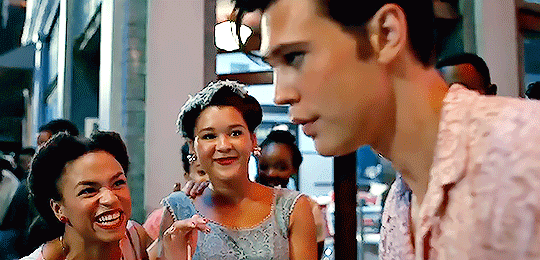


179 notes
·
View notes
Text



















Tennessee was admitted as the 16th state of the United States on June 1, 1796.
Statehood Day in Tennessee
Statehood Day in Tennessee bursts with excitement each June 1st, marking the day Tennessee joined the Union in 1796 as the 16th state.
This special day is not just a local celebration but a vibrant reminder of Tennessee’s unique contributions to the nation’s history.
It’s a day filled with pride for Tennesseans, who celebrate not only their past achievements but also the dynamic culture that continues to evolve within their state.
The importance of Statehood Day stretches beyond mere commemoration. It embodies the spirit of unity and civic pride. Tennesseans and visitors alike engage in activities that highlight the state’s rich history and cultural significance.
From visiting historical sites to participating in community events, the day offers a multitude of ways to connect with Tennessee’s heritage.
Museums, like the Tennessee State Museum, often host special events that provide insights into the state’s journey to statehood and its development over the centuries.
Ultimately, Statehood Day fosters a sense of community and historical awareness. It’s a time to reflect on the state’s journey and celebrate its ongoing story.
Whether it’s through exploring museums, enjoying local music, or learning about Tennessee’s pivotal moments, the day offers something for everyone to appreciate and enjoy, strengthening the bond among its people and visitors.
History of Statehood Day in Tennessee
Statehood Day in Tennessee marks the state’s entry into the Union in 1796 as the 16th state. Its journey to statehood began earlier, in 1790, when Tennessee became the Southwest Territory.
Under Governor William Blount, the territory aimed to meet the population requirement of 60,000 free male residents to gain statehood.
By 1795, a census revealed that the Southwest Territory had met this requirement. Tennessee then petitioned Congress for statehood, a bold move inspired by its people’s resilience and desire for representation.
On June 1, 1796, Congress approved Tennessee’s petition, marking a significant milestone in the state’s history.
Statehood Day celebrates Tennessee’s rich history and the bold vision of its founders. Today, it reminds people of Tennessee’s contributions to American culture and politics, showcasing its vibrant heritage.
The day brings together Tennesseans to celebrate their shared history and future.
How to Celebrate Statehood Day in Tennessee
Get Historical at Museums
Celebrate Statehood Day by exploring Tennessee’s past in museums. Dive into captivating exhibits showcasing artifacts and documents that reveal how this state came to be.
Feel the history come alive while learning about the journey from territory to statehood.
Parade with Pride
Join a local parade to show your love for Tennessee’s statehood. March down the streets waving flags and shouting for joy. Get dressed in red, white, and blue, and join your neighbors in celebrating the state’s legacy.
Reenactment Revelry
Step back in time with reenactments of Tennessee’s early days. Watch history buffs portray early settlers, soldiers, and politicians who helped shape Tennessee’s identity.
Marvel at their attention to detail while they bring the olden days to life.
Crafting Celebrations
Get creative with Statehood Day crafts. Make art that celebrates Tennessee’s symbols, from the mockingbird to the iris. Share your masterpieces with friends and spread the statehood joy all around.
Musical Melodies
Embrace Tennessee’s rich musical heritage. Attend local concerts or jam out to your favorite Tennessee-born artists at home. Let the tunes bring rhythm to your celebrations.
Source
#The Pinnacle at Symphony Place#Nashville#Chattanooga Choo Choo#travel#Chattanooga#Court Square#Memphis#original photography#summer 2016#vacation#tourist attraction#landmark#architecture#cityscape#Country Music Hall of Fame and Museum#Tennessee River#Beale Street#Mississippi River#Graceland#Cumberland River#Tennessee#16th US State#1 June 1796#anniversary#US history#USA#Jackson#Blue Ridge Mountains#Great Smoky Mountains National Park#2009
6 notes
·
View notes
Text
youtube
So...'breaking' comes to the Olympics. Meh.
Take a gander at the Beale Street Flippers in Memphis.
Especially impressive in person!
3 notes
·
View notes
Text

he's so magical ⭐
#me#greta van fleet#gvf#gretavanfleet#sam gvf#danny gvf#jake gvf#joshua michael kiszka#my photoset#my photography#beale street#beale
40 notes
·
View notes
Text

9 notes
·
View notes
Text
The Russians are coming ... with some great music!
#rock n roll#new music#music#alternative rock#classic rock#memphis#chicago#nola#new orleans#russian#russia#rock#rock music#blues music#beale street
2 notes
·
View notes
Text
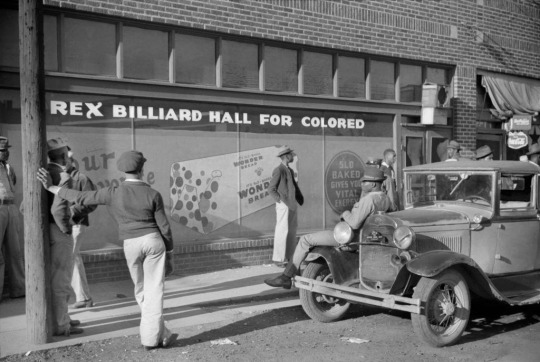
Rex Billiard Hall for Colored, Beale Street, Memphis, 1939.
12 notes
·
View notes
Text



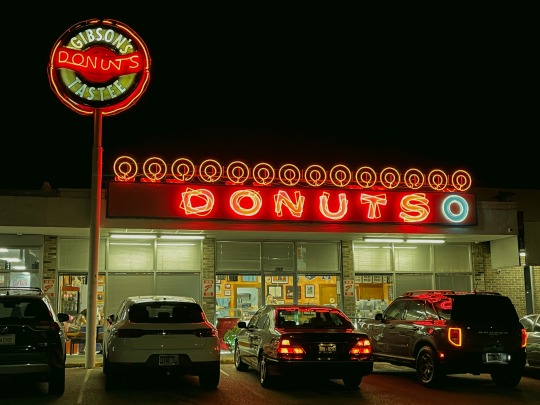
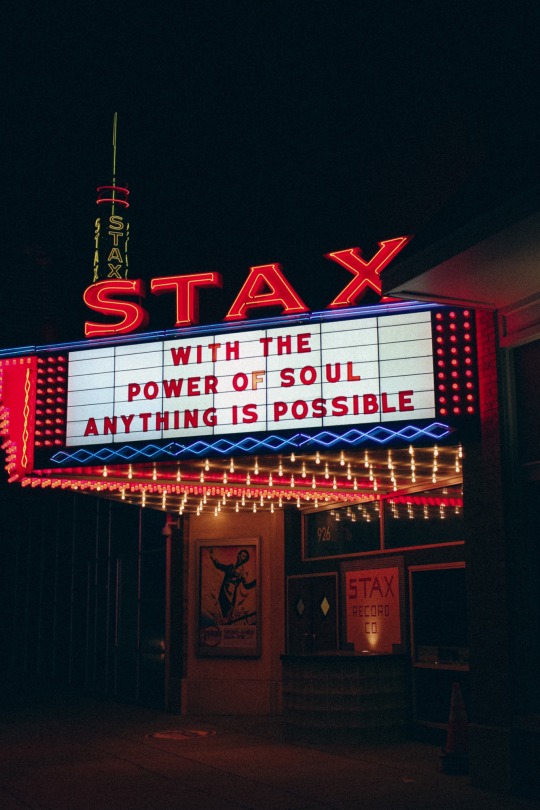



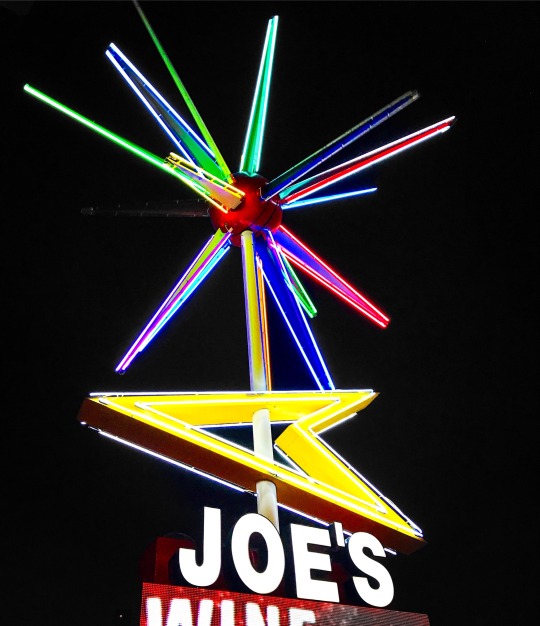

I dunno why the mobile app wouldn’t let me create any posts for like an entire week on my phone, but here’s some pics from Memphis.
14 notes
·
View notes
Text










Audubon Drive & Beale Street.
6 notes
·
View notes
